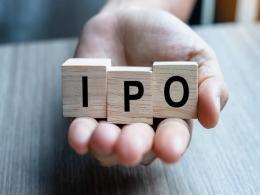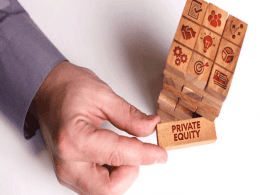The Indian private equity industry is going through some tough times. On the supply side, there is excess capital (and even more being raised as we speak!), too many private equity (PE) funds, high levels of intermediation leading to open auctions, and volatile currency fluctuations. On the demand side, there are inadequate ‘high quality’ investment opportunities in the private space, demanding entrepreneurs and promoters, high valuation expectations (still linked to and sometimes at a premium to already irrational public markets), rising costs and declining margins in the economy, an ineffective government, continuing issues of corporate governance, and a perceived lack of appreciation of private equity’s ‘value add’! Indeed, it looks like a perfect storm.
We probably are in the ‘worst part of the cycle’, and I am optimistic (like many others) that the situation will improve over time (like all market cycles do!), though it’s tough to forecast the timing and extent of recovery. However, there are two clear near term outcomes we cannot escape – overall muted returns for the average private equity investor, and a gradual but significant separation (in terms of returns delivered) of the really good PE teams versus the average players over this period.
With this as background, it’s a great time to probably introduce some thoughts on improving alignment of interests between GPs (General Partners) and LPs (Limited Partners) in the Indian market. In an environment when everyone is making superb returns, the debate about alignment is (unfortunately) often ignored. However, in tough times like these, when overall returns are muted, the harmful effects of poor alignment show up pretty starkly. In my mind, true alignment between an LP and GP happens when both are interested and incentivized to meet the same objective – highest possible returns for the overall Fund in question. True alignment is also a situation when the gains (or losses) are fairly split between the two, both in good times and in bad times!
While alignment can have many aspects, I will discuss the main parameters that truly impact it - fee-carry-hurdle rate arrangements, GP’s contribution to the fund, and overall fund size. All these are obvious, but sensitive issues, and most LPs may not discuss the ‘elephant in the room’, at least not directly, but everyone can see it! Let me hazard to state the issue and potential solution for each parameter separately, although they are all inter-related:
Fee for GP team’s remuneration and expenses
Most GPs charge a 2% (it may vary, but this is the norm) fee per annum on committed capital (for the investment period), and then the same % on the invested portfolio after that. This is meant to maintain a high quality team that can execute the investment strategy. However, in situations when this fee number becomes large enough to more than adequately pay PE teams (salary plus large bonuses), alignment with LPs suffers dramatically. Indeed, in most of the larger PE funds in the country, the average base plus bonus compensations are significantly HIGHER than what the same individuals would get in a very senior corporate/ finance role. I have no issue with that – you need to pay to attract the best talent. Unfortunately, the alignment with LPs breaks down when the GP team can continue to get this high base salary plus bonus for the life of the fund, irrespective of returns to LPs. The fee is an issue especially in fund sizes larger than $300 - $400mn, and is exacerbated in situations where the GP has raised multiple funds! I am not suggesting that fee should be stripped down completely, but GP teams getting a fee income of $10mn-$20mn pa for a team size of 10 people is an obvious issue!
GPs often commit to contribute to the fund themselves as well – typically about 1-3% of the corpus. In my view, this is grossly insufficient, especially when you think that a large part of this contribution can and does actually come from fees itself over the life of the fund! A true ‘skin in the game’ GP contribution would be at least 5-10% of the fund, especially if it comes out of fee. I think it’s time to either do a bottom up calculation of reasonable fee required to support a team (some GPs in the US publish a budget based fee system, and also have maximum overall limit to fees on a fund through its life), or GPs continue the 2% benchmark, but commit significantly to the fund corpus - at least 5-10% over the fund life.
Carry paid to GPs on hitting a specified rate of return (hurdle rate)
Most GPs are entitled a carry of 20% of the net gains, assuming the hurdle rate (usually 8% return) is achieved. Again, both these numbers are borrowed from the western model of PE. I don’t think I would grudge the 20% number (1/5th of the gains on investment to the GP is fair, I think). The issue I have is with the hurdle rate in an emerging market like India (with GDP growth rates at 7-8%!), where 8-10% returns are quite possible with lower risk in debt products. I do think it is very odd for a GP to be paid carry for delivering a 12% IRR in a market like India, especially as LPs have had to bear with illiquidity over 5-9 years for this level of return!
Let’s do a simple back of the envelope calculation (a quick disclaimer at this stage – ALL calculations are estimates. They are meant to illustrate the points, NOT stick numbers in your mind) – a GP with a fund size of about $400mn, with a ‘very average performance’ of 12% IRR before carry will earn about $75mn in carry over the fund life of approx 8-9 years (assuming average hold period of 6 years for each investment), in addition to earning estimated fees in excess of $40mn. The LPs in this fund will take home a net IRR of about 10% after carry (actual numbers may vary due to catch up clauses, but that is another discussion). So a GP team has been paid $115mn (or $14mn pa over 8 years) for delivering a very average 10% return – the LPs could have just invested in a safe and liquid debt instrument! Just to make matters more interesting, if the GP has raised another fund subsequently, he stands to earn another revenue stream from there as well (his effective payouts will double), while those LPs are also earning the same 10% net IRRs! The lack of alignment gets more dramatic if we increase the fund size!
I think the issue is not the carry of 20%, but the accepted hurdle rate of 8%! What if the hurdle rate is more like 12-15%? What if the hurdle rate is 8%, but 20% carry paid only for returns ABOVE that? Would carry payouts be better aligned to performance? I think so. (One could make a technical point that hurdle rate is usually in $, and there are currency risks. Well – there are solutions around that if someone really wants to go that way. Even better, keep the $ out of the picture as the GP is not doing anything to influence the exchange rate either way anyhow)
Fund size and pace of deployment
This is an often neglected and ignored part of the private equity business (probably because there is no real science to establishing the right fund size), but can have a dramatic impact on fund performance. Most GPs are unable to (indeed, many don’t even plan to) deploy anything more than 80-85% (let’s call this ‘percentage deployed’) of their fund commitment! The gap is due to fees paid during the investment period (4-5 years at 2%pa), and genuine inability to find good deals to deploy the funds effectively. The ‘percentage deployed’ parameter, driven by fee and fund size, has a dramatic effect on fund returns.
Imagine that a $100mn fund has been able to deploy 80% of the fund in its investment period of say 4 years. About 8% has gone towards fees, and another 6% or so is reserved for future fees (so $94mn total drawn). So even if the fund team is able to invest in deals that get a 2x across the investments ($160mn), the actual multiple to LPs drops to 1.7x ($160mn divided by $94mn). When LPs look at doing a due diligence on funds, the percentage deployed and net returns at the fund level are important criteria, but GPs usually focus on deal level multiples (which are important, but don’t show the real picture as they get dampened at the fund level).
Most GPs size their fund with a mind set of being ‘comfortable’ on deployment (more than enough capital for deals they are able to close), and being ‘comfortable’ on fee earnings (adequate compensation for the team). Most teams raise larger subsequent funds, arguing that they will be able to fully finance deals that, in the past, they had to share (this is the rationale for many venture funds raising much larger funds today), and do larger deals that they could not evaluate earlier. Both these arguments run contrary to the very basis of the team’s success in the first place – they were probably able to identify promoters and businesses earlier than others (and made the most returns from the initial explosive growth of the business, which probably tapered later for the subsequent investors), and were able to operate in a deal size segment that did not have too much competition. Changing both these would lead to a larger fund with lower returns.
To maximize net returns, it makes sense to raise a fund that is JUST SHORT of what you can reasonably deploy (so you get to near 100% deployment, and are almost at the point of letting go of a good deal as the fund size is very tight!), reinvest any returns in the early years, and not to reserve money for future fee – rather, take that from future distributions rather than calls on LP’s capital.
This will also help in subsequent fund raises – LPs will look favorably at the team that already has a great pipeline of 2-3 deals ready when it starts raising its next fund (instead of struggling to close the 2-3 deals still to be done in the previous fund!).
For GPs who have already raised too big a fund, there is still time. Be proactive and bold, reduce the fund size voluntarily, improve the ‘percentage invested’, cap and postpone fees where you can and take them out of distributions, rather than additional calls on LP’s capital. These are not my ideas - there are examples of people having done a combination of the above actions already in the market. You will find that LPs will reward you when the IRRs improve, and the effort will eventually result in higher carry earnings for you!
Summary
These suggestions will always be tough to swallow, and difficult to implement – they are designed to move GPs into a zone of discomfort – of challenge, of putting their money where their mouth is. I am not sure how many GPs would agree to them (indeed, even some conservative LPs may frown on them!) – but I do think these are win-win solutions, and the time has come to look at some provocative steps to correct the situation. Some version of the suggestions above will improve returns for everyone in the business, and improve alignment between LPs and GPs – at least thinking in this direction will start. It will enable GPs to live up to their roles as true ‘fiduciaries’ for their LPs, and hopefully kick start the next cycle of high returns in Indian PE.
(Praneet Singh is a managing director of Siguler Guff & Company - a multi-strategy private equity investment firm, which together with its affiliates, has over $10 billion of assets under management. The views expressed are his own.)






